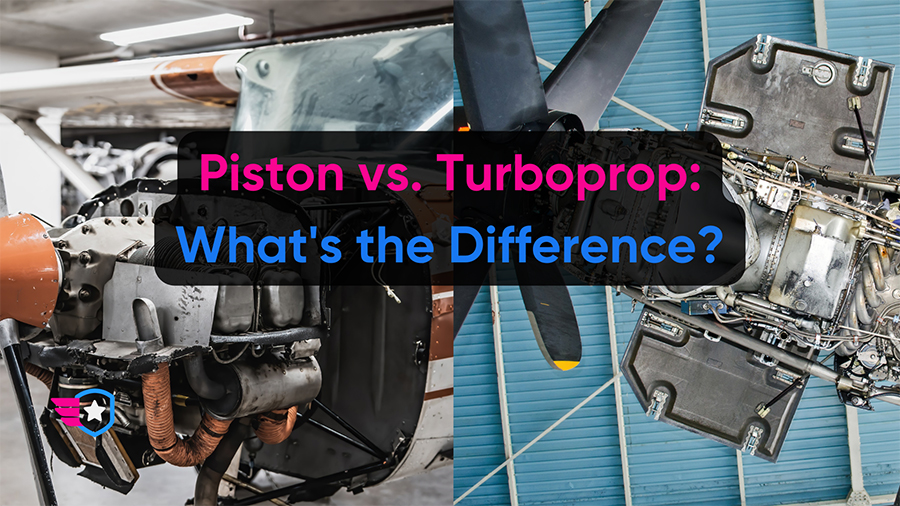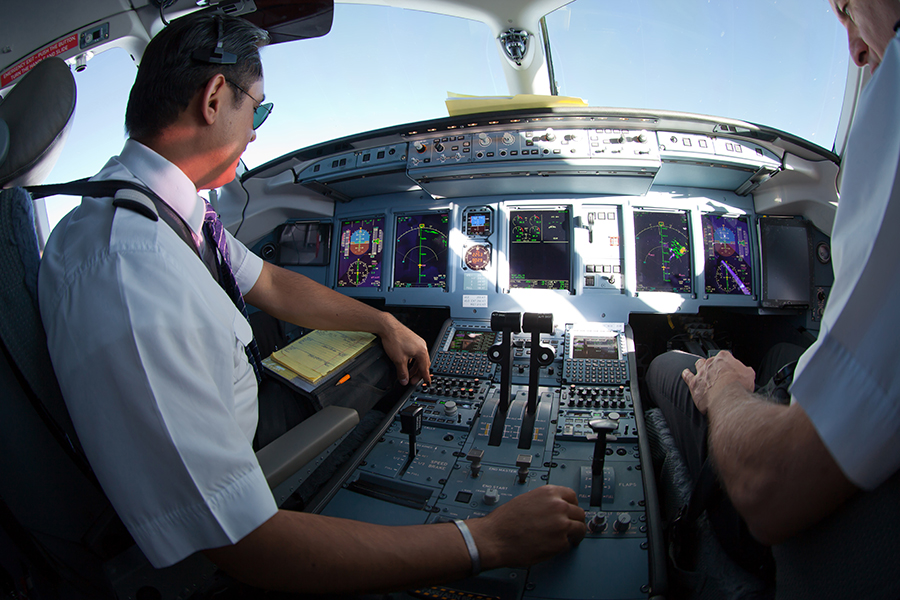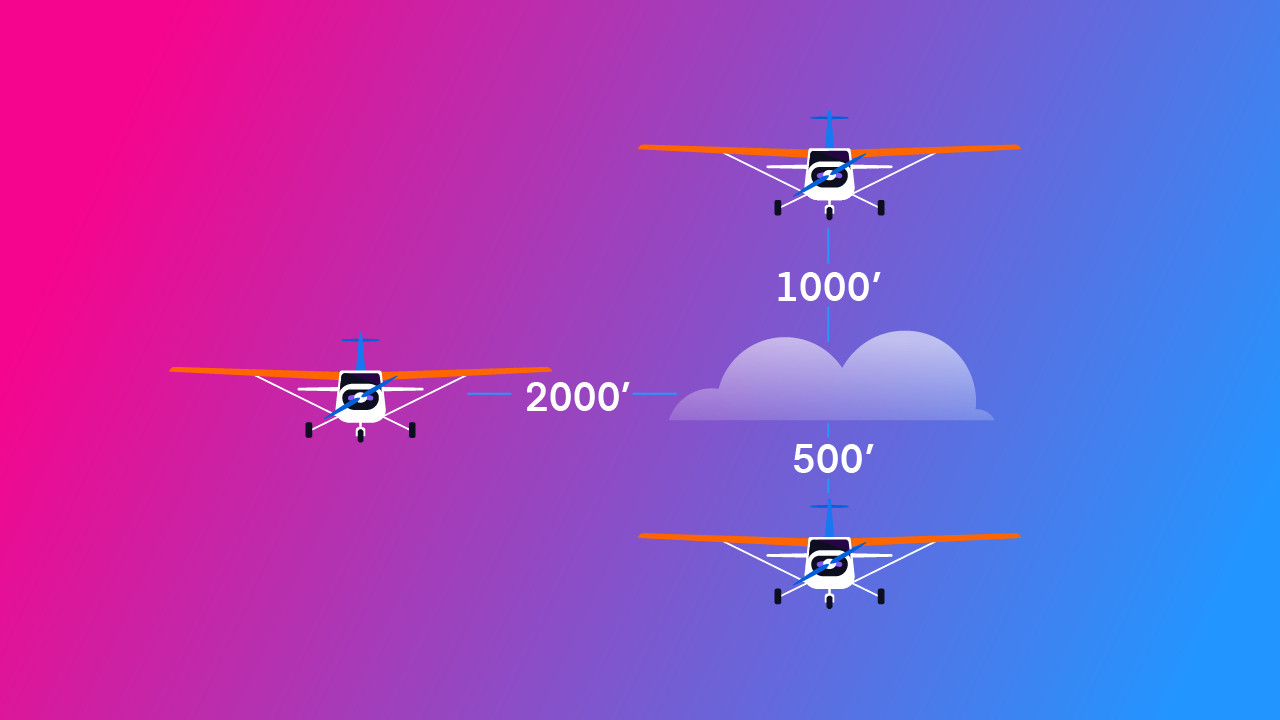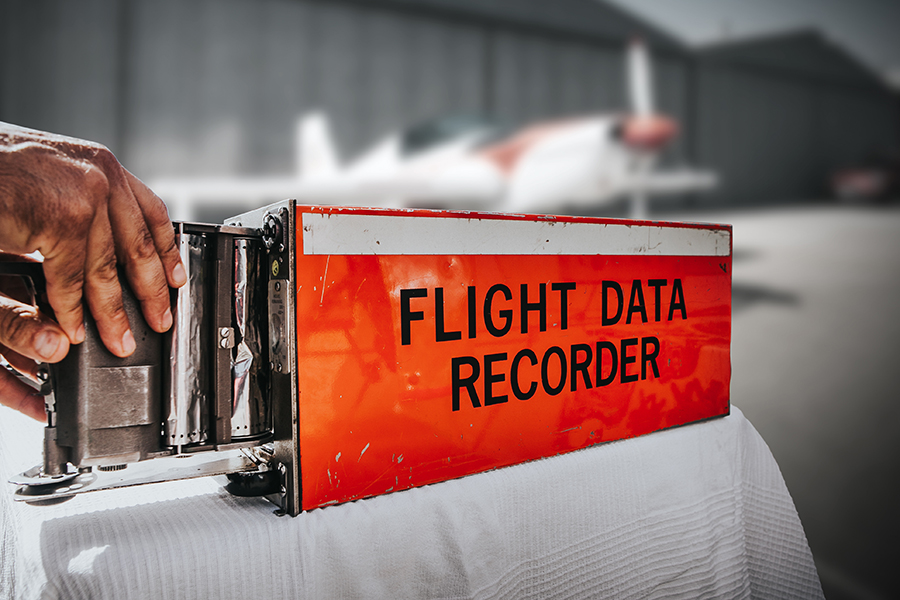-
Key Takeaways
-
The History of Turboprops and Piston Engines
-
The Piston Engine
- Basics of Operation
- Key Advantages
- Potential Drawbacks
-
The Turboprop Engine
- Basics of Operation
- Key Advantages
- Potential Drawbacks
-
Should You Buy a Piston or Turboprop?
- Mission Profile
- Budget and Operating Costs
- Maintenance
- Access to Airfields
- Training and Experience
- Resale Value
- Weather and Altitude Performance
-
Final Thoughts
The heart of every aircraft is its engine. This driving force dictates everything, from performance and fuel efficiency to maintenance costs.
Two of the most common powerhouses in general aviation are piston and turboprop engines.
They may seem similar at first glance – but they’re actually surprisingly different.
Key Takeaways
Piston-engine aircraft are an excellent choice for pilots who are looking for an affordable and straightforward option, particularly for shorter, more leisurely flights. With their more widely available fuel type and lower initial costs, they are a favorite among flight schools and casual fliers.
On the other hand, turboprop engines are renowned for their efficiency and speed, especially over long distances and at high altitudes. They are often chosen for more professional and commercial applications due to their ability to combine some of the speed advantages of jets with the ability to operate out of shorter runways, just like piston-engine aircraft.
In essence, the decision between piston and turboprop engines boils down to your specific needs as a pilot, primarily based on budget, performance, and the kind of flying you plan to do most.
The History of Turboprops and Piston Engines
Long before the age of commercial jets and supersonic fighters, the skies were ruled by propeller-driven aircraft powered by piston engines.
These engines, originating from the early 20th century, functioned by converting linear piston motion into rotational motion, driving the propellers. Iconic aircraft from World War II, like the P-51 Mustang and Spitfire, relied on these powerhouses.
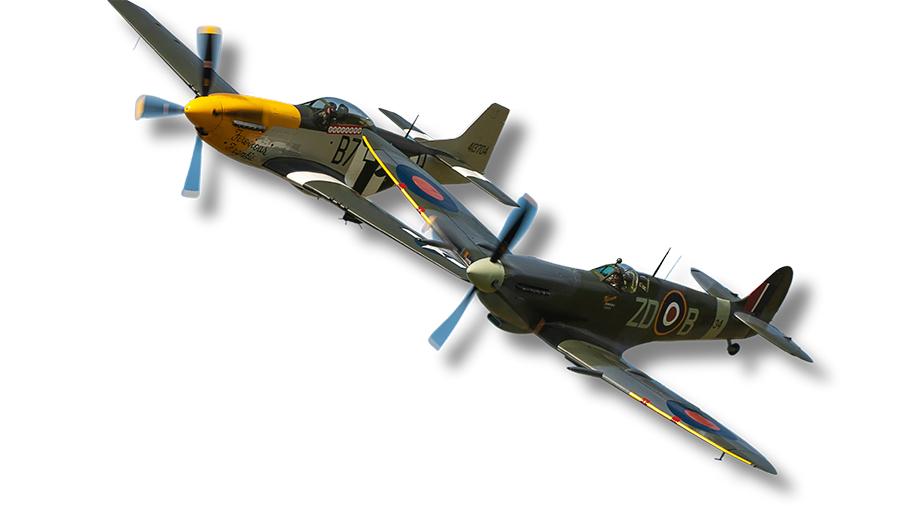
The P-51 Mustang and Supermarine Spitfire are two iconic piston-engine aircraft.
However, as aviation progressed, the need for more efficient, powerful, and reliable engines grew.
Enter the turboprop in the mid-20th century.
This revolutionary design combined the principles of jet propulsion with the practicality of a propeller. The turboprop’s inception was a game-changer, offering the reliability of jet engines with the versatility of props, making it ideal for regional flights and challenging terrain.
Today, you’ll still find piston engines in small General Aviation aircraft (we’ll explore why later in this article).
Turboprops continue to play a key role in commercial and private aviation, and we’ll continue to see them produced for the foreseeable future.
The Piston Engine
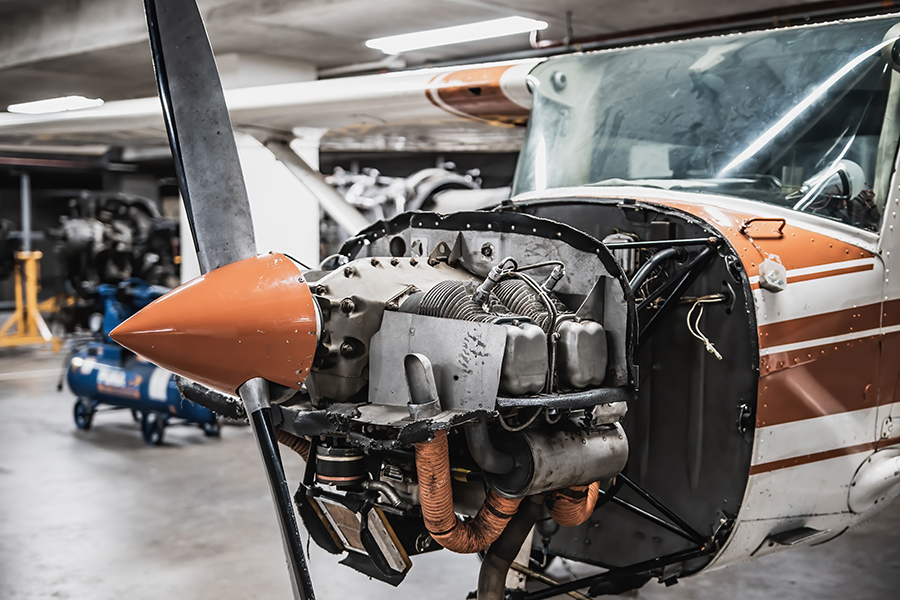
The piston engine, often referred to as the ‘reciprocating engine,’ is a true classic in the world of aviation.
Known for their simplicity and ruggedness, piston engines are the go-to for countless small aircraft.
Basics of Operation
A piston engine operates on a simple and effective principle: it converts energy from burning fuel into mechanical energy through a repetitive cycle of piston movements.
This cycle is known as the ‘four-stroke cycle,’ a fundamental concept that has remained largely unchanged since its inception.
Here’s a breakdown:
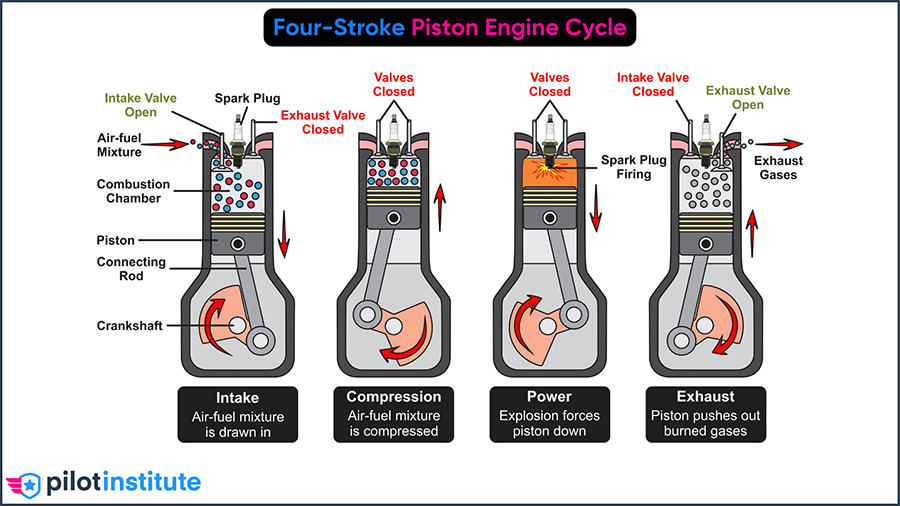
- Intake Stroke: As the piston moves downward inside the cylinder, it creates a low-pressure area that draws air and fuel into the combustion chamber through an open intake valve.
- Intake Stroke: As the piston moves downward inside the cylinder, it creates a low-pressure area that draws air and fuel into the combustion chamber through an open intake valve.
- Power Stroke: With the air-fuel mix compressed, a spark plug ignites it. This causes an explosion that forces the piston downward, creating the power that eventually turns the propeller.
- Exhaust Stroke: After the power stroke, the piston moves back upward, pushing the burned gases (exhaust) out of an open exhaust valve, resetting the chamber for the next intake stroke.
Key Advantages
- Cost-Effectiveness: Piston engines have a lower initial cost than their turboprop counterparts. Their maintenance and operating costs are more affordable as well, making them an attractive option for private pilots and small aviation companies.
- Fuel Efficiency: For low-speed and shorter flights, piston engines can be remarkably fuel-efficient. They excel in scenarios where time is less of a consideration. In other words, a piston-engine airplane flies slower but uses less fuel.
- Simplicity: Piston engines are easier and less expensive to maintain. This simplicity has allowed them to remain a staple in the aviation world, with a wide network of knowledgeable mechanics and abundant parts.
- Versatility: Piston engines are well-suited for a variety of aircraft, from trainers to small personal and business aircraft. They are capable of operating from shorter runways and in a variety of conditions, making them a go-to choice for general aviation.
Potential Drawbacks
- Limited Power Output: Compared to turboprops, piston engines produce far less power. This limitation is a deciding factor for pilots who need to carry heavy loads, fly faster, or fly at higher altitudes.
- Lower Altitude Performance: Piston engines are not as efficient as turboprops at high altitudes.
- Regular Maintenance: Despite their mechanical simplicity, piston engines have many moving parts that require regular and often meticulous maintenance. This can lead to increased downtime for inspections and repairs.
- Operational Lifespan: While built to last, piston engines often have a lower Time Between Overhauls (TBO) compared to turboprops, meaning they might need significant maintenance or replacement sooner.
- Climate Sensitivity: Piston engines can be more sensitive to extreme temperatures, which may affect starting and overall performance in very cold or hot environments.
The Turboprop Engine
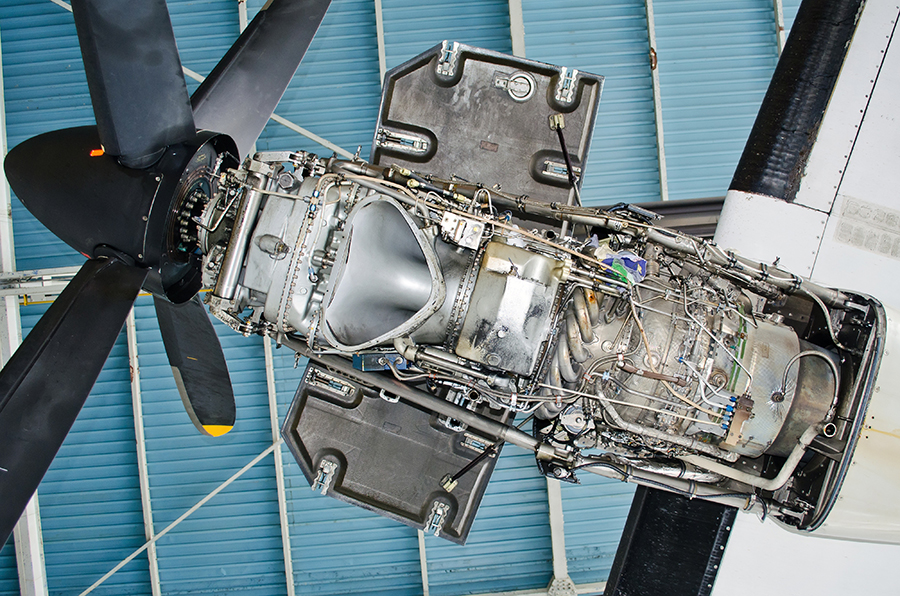
The turboprop is where jet engine technology and propellers unite to create a unique blend of power and efficiency.
A step beyond the piston engine in terms of complexity and performance, turboprop engines are the choice for most regional, cargo, and specialty aircraft.
With the ability to fly faster and higher than their piston counterparts, (while maintaining impressive fuel efficiency), turboprops offer a compelling mix of performance and practicality.
Basics of Operation
At its core, a turboprop engine is a jet engine that turns a propeller. It’s a fascinating marriage of technologies that combines the high-speed power of a jet with the low-speed efficiency of a propeller.
Here’s how it works:
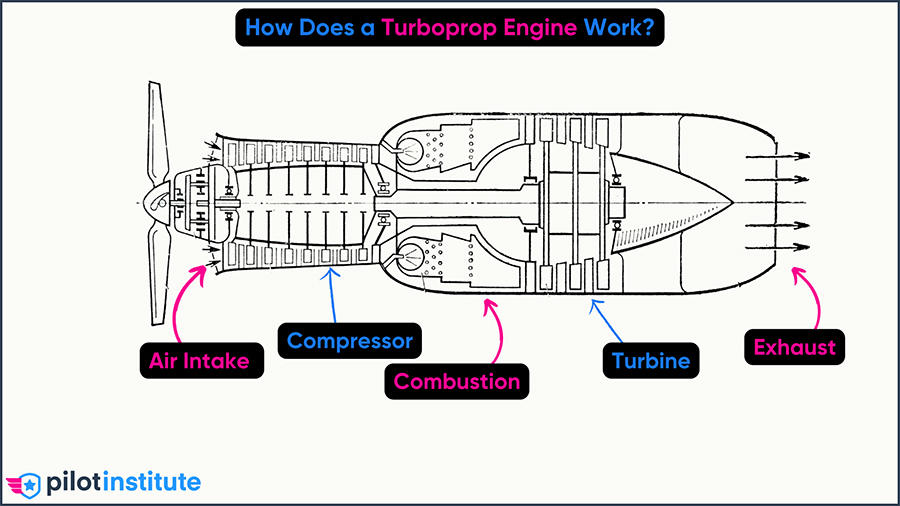
- Gas Generation: Similar to jet engines, turboprop engines start with the compression of air in the engine’s inlet, driven by an axial or centrifugal compressor. This compressed air then mixes with fuel and ignites in a combustion chamber, creating a high-speed stream of exhaust gases.
- Power Turbine: Unlike jet engines, the majority of the energy in this exhaust doesn’t exit the back of a turboprop engine. Instead, these gases flow over a set of turbines, causing them to spin.
- Reduction Gearbox: The spinning turbines are connected to a shaft, which runs through a reduction gearbox. This is a critical component – it slows down the high RPM (revolutions per minute) of the turbine to a speed that is suitable for propeller operation.
- Turning the Propeller: After the reduction gearbox, the now appropriately paced rotational energy turns the propeller. It’s the spinning propeller, not the jet of exhaust, that provides most of the thrust in a turboprop engine.
- Variable Pitch Control: Most turboprop engines are connected to propellers that have variable pitch control, which means the angle of the propeller blades can be changed. This allows for more precise and efficient control of the aircraft’s thrust and performance at different speeds and altitudes.
The process may seem complex, but it’s a sequence that happens remarkably smoothly and reliably, providing turboprop aircraft with a blend of speed, efficiency, and versatility.
While they share some principles with jet engines, turboprops carve out their own niche by using that jet power in a different way: to turn a propeller that moves the aircraft forward.
Key Advantages
Turboprop engines aren’t just a stepping stone between piston engines and pure jets; they are powerhouses in their own right.
Here are some of the key advantages that make turboprops a favorite choice for many pilots and operators:
- Fuel Efficiency: At lower speeds, turboprops are significantly more fuel-efficient than pure jet engines. This translates to lower operating costs, especially for missions that don’t require jet-level speeds.
- Versatility: Turboprops can take off and land on shorter runways than many jet engines, making them perfect for accessing remote or rugged airstrips where jets dare not tread.
- High Altitude Performance: Turboprops are less dependent on oxygen from the atmosphere for combustion compared to piston engines, allowing them to fly efficiently at higher altitudes without the need for complex turbocharging systems.
- Climb Rates: With their robust power, turboprops boast impressive climb rates. This is a significant advantage when navigating through challenging weather or terrain.
- Lower Operating Costs: Although more complex than piston engines, turboprops usually have longer Time Between Overhaul (TBO) periods and, in many cases, lower overall maintenance costs per hour of operation.
- Cruising Speed: While they might not match the speed of pure jets, turboprops are faster than piston engines, making them a great middle-ground choice for those who need speed but also want to control operating expenses.
- Reliability and Durability: Modern turboprop engines are known for their reliability. They are built to withstand harsh conditions, which is why they are commonly found in cargo, agricultural, and firefighting aircraft. They are unlikely to fail, whereas piston engines are notoriously unreliable.
These advantages make the turboprop engine an outstanding option for a wide variety of missions and aircraft types.
Whether it’s delivering critical cargo to a remote village, patrolling vast stretches of coastline, or whisking passengers away to a secluded vacation spot, the turboprop engine shines as a powerful and versatile performer.
Potential Drawbacks
While turboprop engines have a range of significant advantages, they are not without their challenges.
Here’s what to keep in mind:
- Complexity and Maintenance: While generally more reliable than piston engines, turboprops are complex machines. When they do need maintenance, it can be intricate and costly, requiring specialized knowledge and skills.
- Initial Cost: The upfront cost of a turboprop engine is higher than that of a piston engine. While they often make up for this in efficiency over time, the initial investment can be a significant barrier.
- Fuel Availability: Turboprops run on jet fuel, which may not be as readily available at smaller, more remote airports compared to avgas for piston engines.
- Cruising Speed: While faster than piston engines, turboprops are slower than pure jet engines. For very long distances, this can significantly extend travel time.
- Operational Training: Pilots transitioning to turboprop aircraft will face a steeper learning curve due to the different systems and operating procedures, requiring additional training.
Weighing these potential drawbacks against the advantages is crucial. Depending on your mission, the drawbacks may be inconsequential, or they could be deal-breakers.
It’s all about finding the engine that’s the right fit for your mission.
Should You Buy a Piston or Turboprop?
The debate between piston and turboprop isn’t just about engine specs; it’s about finding the perfect match for your flying needs and lifestyle.
Here are some key factors to help you navigate this significant decision.
Mission Profile
Ask yourself: What kind of flying will you primarily be doing?
If you need to cover long distances regularly and quickly, a turboprop might be the way to go. For shorter, more leisurely flights, a piston could be more than sufficient.
Budget and Operating Costs
Turboprops are more expensive to purchase and operate than piston engines. You may need to sacrifice the performance of a turbine engine for the price of a piston engine.
Maintenance
Are you comfortable with the more complex and expensive maintenance a turboprop requires, or would you prefer the simpler and cheaper piston engine systems?
Access to Airfields
If you frequently fly into smaller, more remote airfields where jet fuel might not be available, a piston engine, which uses avgas, could be more practical.
Training and Experience
Are you prepared for the additional training that might be necessary to transition to a turboprop?
If you’re new to flying or prefer a more straightforward flying experience, a piston might be the better choice.
Resale Value
Turboprops tend to retain their value well, which can be a significant advantage when it’s time to sell.
Weather and Altitude Performance
For extensive flying in challenging weather or at higher altitudes, a turboprop’s strong performance under these conditions might tip the scales.
Final Thoughts
In the end, there’s no one-size-fits-all answer. It’s about aligning the engine type with your specific needs, budget, and flying lifestyle.
Talk with other pilots, consult with a trusted aircraft owner or mechanic, and, if possible, fly both types of aircraft before making your decision.
Remember, the best choice is the one that makes you look forward to every flight, confident in the machine you’re in.
